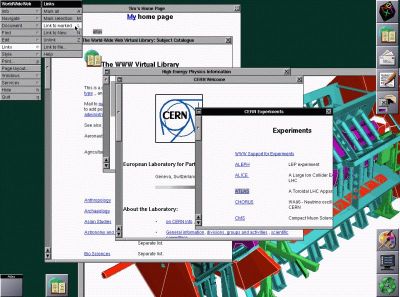What is the complex and bizarre transition of browser wars involving the world and 'user agent strings'?

by
A user agent is software that has a function to communicate based on a protocol and notify the result on behalf of a user, and generally refers to a web browser. Web browsers have started intense competition since the early 1990s, and the names of user agent strings that identify browsers have undergone a major transition.
WebAIM: History of the browser user-agent string
https://webaim.org/blog/user-agent-string-history/
First, immediately after the release of the World Wide Web by the European Nuclear Research Organization (CERN) in 1993, the NCSA Mosaic web browser was released by the US Supercomputer Application Laboratory . NCSA Mosaic was the first web browser that could display text and images simultaneously, and many users welcomed the appearance of NCSA Mosaic.
In 1994, a new web browser named “Mozilla”, developed independently by NCSA Mosaic developers, appeared. The name 'Mozilla' was an abbreviation for 'Mosaic Killer', but as a result of Mosaic's objection to this name, Mozilla was renamed to ' Netscape ' and released. “Netscape” was compatible with frame functions that NCSA Mosaic did not support.
The web page administrator who incorporated the frame function into the web page says, “I want to visit from a Netscape browser with a frame function, but I do not want to visit from other browsers that do not support the frame function.” We have developed a system that identifies the “user agent character string” of the browser that visited the website, and that only the user agent browser permitted by the web page administrator can visit the web page. This system is called user agent sniffing . This caused the appearance of a web page that appeared in Netscape but not Mosaic.

by
Inspired by Netscape's breakthrough, Microsoft announced a web browser called “ Internet Explorer ” with the release of Windows 95 . Internet Explorer was advertised as “compatible with Netscape”, but in fact Internet Explorer was based on NCSA Mosaic, so it did not support the frame function. However, because Microsoft had a strong desire to “spread Internet Explorer as soon as possible to make it a“ Netscape killer ””, users were able to visit the web page through user agent sniffing by the web page administrator. Employ the hand of impersonating the agent in Netscape. Internet Explorer users welcomed the advent of Windows-compatible browsers, but the web page administrator was very confused.
Microsoft is rapidly expanding its browser share by selling Internet Explorer together with Windows. In the first browser war that broke out around 1995, Netscape disappeared without winning Internet Explorer, but Netscape revived as ' Mozilla '. The user agent called Gecko developed by Mozilla is very good, and Mozilla Firefox using Gecko has been well received by users.
The share of Mozilla Firefox began to grow gradually around 2006, and in 2010, more than 20% of users worldwide used Mozilla Firefox. User agent sniffing was once again carried out, and web pages that favored Gecko-based browsers appeared. Konqueror, a web browser that has been favored by Linux users, believed that many users were `` good at the same level as Gecko '', but unfortunately it is not Gecko and will be repelled by user agent sniffing . So Konqueror began to disguise Gecko's user agent string and decided that it was a user agent called KHTML that is compatible with Mozilla Firefox.

by ccarlstead
In addition, Opera, a web browser developed in Norway, was able to 'change user agent strings' from the beginning. Opera changed the user agent string as desired by the extension, and made it possible to access web pages as if they were disguised as other web browsers.
Safari, a web browser developed by Apple, used Konqueror's KHTML as the user agent, but as a result of adding many features, it became a unique user agent called WebKit . However, since KHTML pages are displayed on the web page, WebKit is 'user agent disguised as KHTML disguised as Gecko'.
Over time, Internet Explorer can no longer ignore Gecko's momentum, and changes have been made so that you can view web pages that favor Gecko. Google Chrome, developed by Google, is disguised as a WebKit user agent to support Safari's WebKit. As a result, 'Safari WebKit disguised by Google Chrome is disguised as KHTML, and that KHTML impersonated Gecko', and as a result, the user agent string has become meaningless. .
Related Posts:
in Note, Web Service, Posted by log1h_ik






